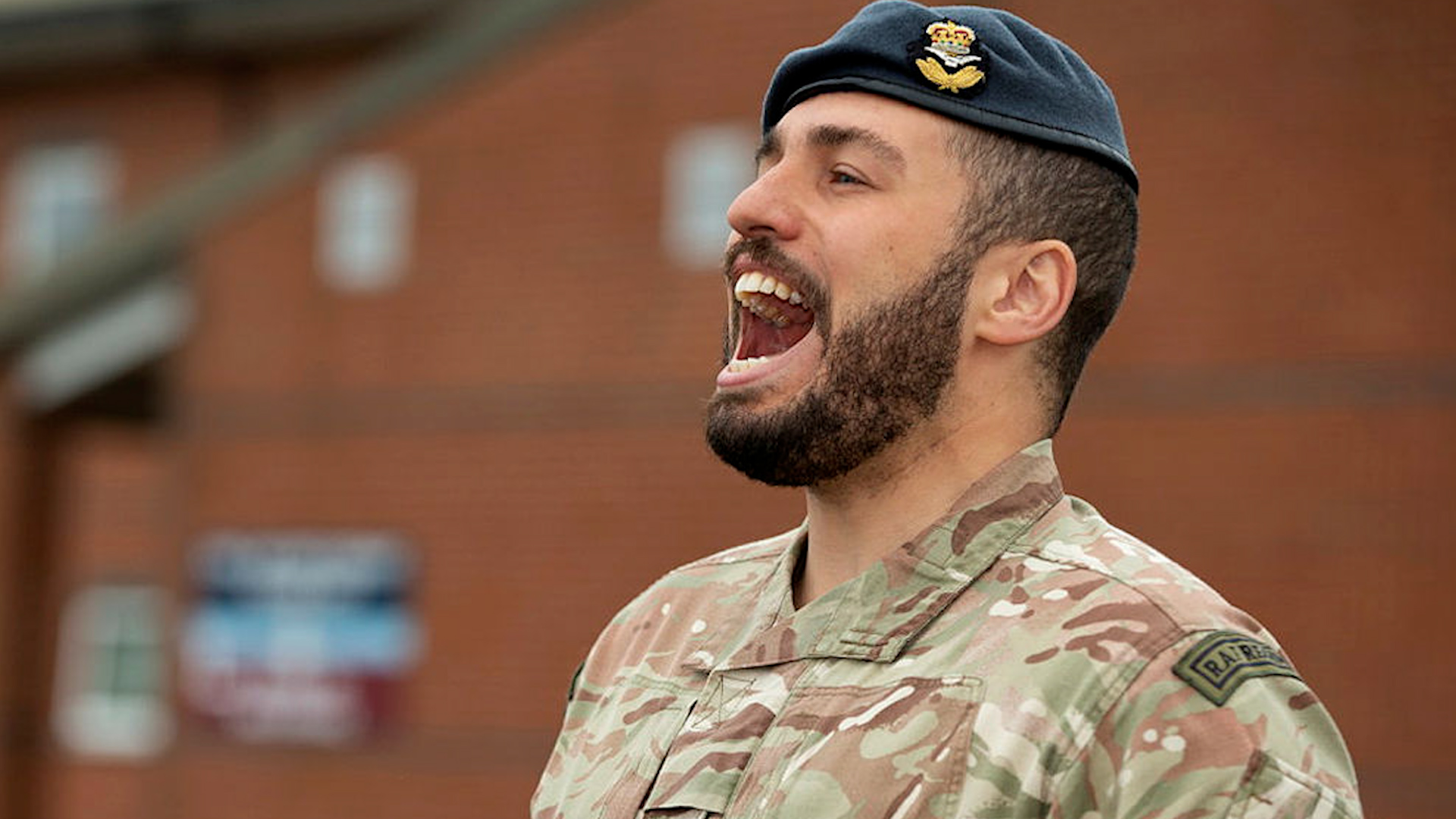
Is it time for a trim? Check out the facial hair facts across the world's armed forces

Military policies on beards can be a divisive topic, sometimes varying drastically between the services and other countries across the globe.
Regulations on facial hair have varied throughout history, with growth positively encouraged in some armed forces, while being banned elsewhere.
Forces News has taken a look at some of the facial hair rules and regulations that are in place around the world today.
Europe
Austria: The Austrian military allows moustaches, beards and sideburns, as long as they are neatly trimmed.
Belgium: The Belgian armed forces allow moustaches and beards, as long as they are properly trimmed.
Croatia: The armed forces of Croatia allow moustaches for soldiers and non-commissioned officers. Officers are also allowed to wear neatly trimmed beards.
There are even specifics in Croatia's rules of service. Article 24 of their rulebook specifies that "the beard must not be longer than 0.5 cm and must not interfere in the performance of professional obligations".
Czech Republic: The Czech army allows moustaches, sideburns and a neat full beard of a natural colour.
A moustache has to be trimmed so it does not exceed the lower margin of the upper lip. Sideburns cannot reach under the middle of each auricle (near the temple and where the jaw meets the skull). Hairs of any sideburns or goatee must not exceed 2cm in length.

Denmark: Danish military personnel are generally permitted to have a well-groomed beard. Stubble, however, is prohibited.
Soldiers in Den Kongelige Livgarde (Royal Life Guards) are not allowed to grow beards while on guard duty. Many Danish soldiers do not have to cut their hair short, but a majority do so.
Estonia: The Estonian defence forces allows their active duty members to grow facial hair, as long as it is properly trimmed and groomed.
As of 2021, conscripts are also allowed to grow beards. Hair must not cover the ears or the back of the neck.
Finland: According to the Finnish defence forces' Rule 91, it is prohibited to grow a moustache, beard or long hair. This does not apply to reservists.
France: The French allow their troops to grow beards off duty or on leave, but never in uniform. The exceptions are French Foreign Legion sappers, who are encouraged to grow a long beard.
If they are chosen to participate in the Bastille Day parade, they must not shave before their march down the Champs-Élysées.
Submarine crews can be bearded or clean-shaven. There is a term called 'patrol beard', reminiscent of the early submarine era, in which a beard was worn while on patrol.

Germany: Present-day regulations of the Bundeswehr allow soldiers to grow a beard on condition that it is not long, and is unobtrusive and well-kept.
Beards must also not impact the proper use of any military equipment, such as a gas mask. Stubble may not be shown, so any soldier who is clean-shaven must wait until furlough to grow a beard.
Greece: In the Greek armed forces, only the navy permits military personnel to wear a beard.
The only facial hair permitted in the army and air force is a neatly trimmed moustache.
Hungary: In the Hungarian defence forces, personnel are allowed to grow beards.
However, the neck must be shaved. A unit commander in some cases can forbid the growth of a beard, but not a moustache.
Irish Republic: The growing of beards is not permitted in any branch of the Irish defence forces apart from the Army Ranger Wing.
However, moustaches are permitted with permission, with sideburns not being allowed beyond ear length.
Italy: In the Italian military, beards and moustaches are allowed, but they must be well-groomed.
Sideburns should reach the middle of the tragus (the inner side of the external ear). Stubble is accepted, except for ceremonial occasions.
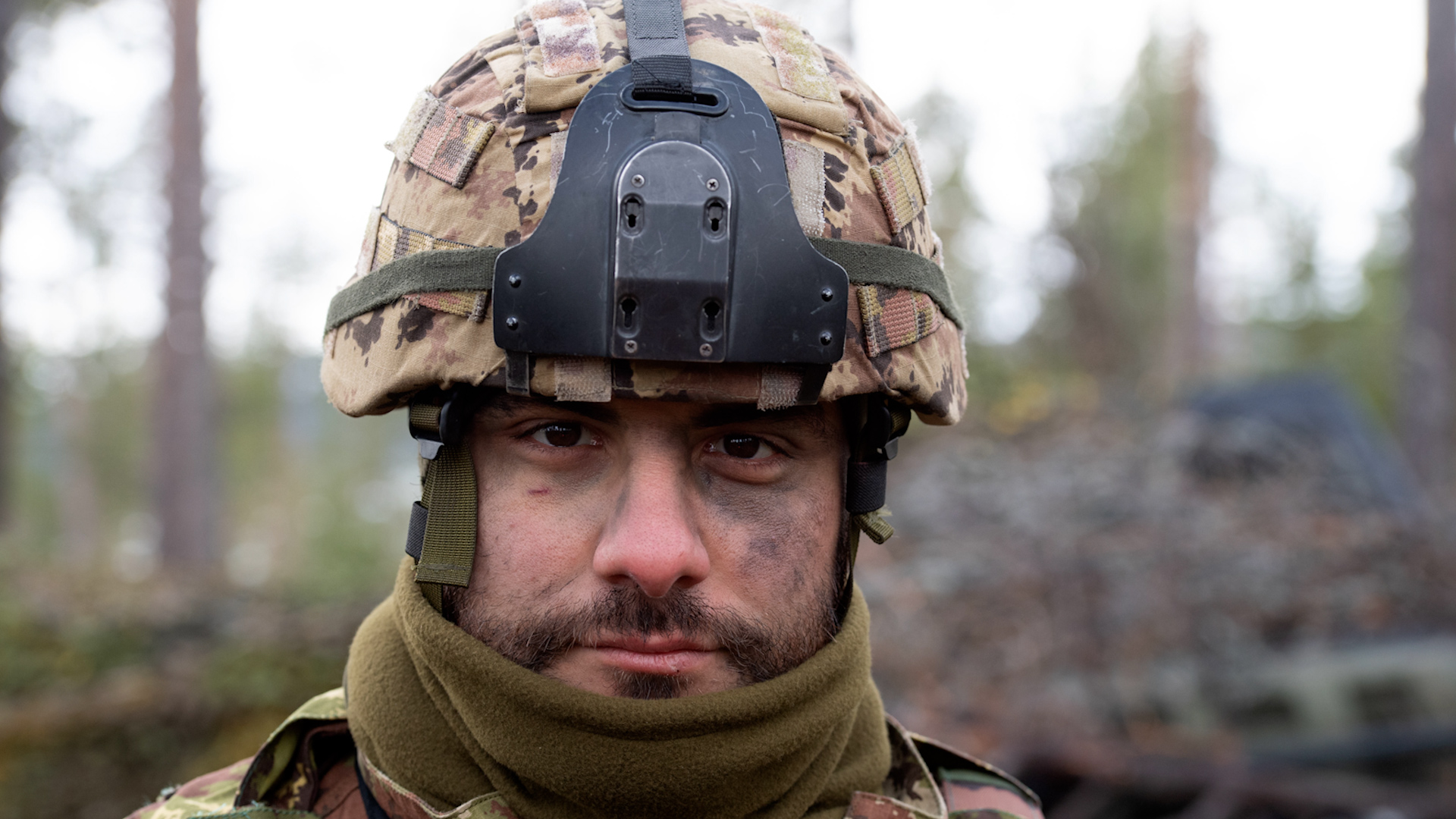
Netherlands: Officers and soldiers can only wear beards with permission in the Royal Netherlands Army.
A moustache can be grown without a permit. Officers of the Netherlands Marine Corps and the Royal Netherlands Navy will sometimes wear beards. Operational circumstances can demand all Dutch military facial hair to be removed immediately.
Norway: Most operative personnel (except musicians and union representatives) are not allowed to wear beards unless the soldier obtains written permission to grow his beard, or the soldier already has a beard upon his enlistment and requests to continue growing it or maintain it at its exact length.
Poland: Only neatly trimmed moustaches are allowed without permission. A full beard is only allowed when permitted by the unit commander or when based on a written medical statement.
However, beards when grown also shall be neatly trimmed. Many Polish soldiers tended to grow 'tour beards' when deployed to Iraq, Afghanistan or Kosovo.
Portugal: Portuguese personnel can ask permission to grow a beard or moustache.
Middle East military campaigns in the 21st century have made growing a beard common again both in the Special Forces community and regular young soldiers in the army, navy and air force. Some paratroopers wear a very distinct moustache.
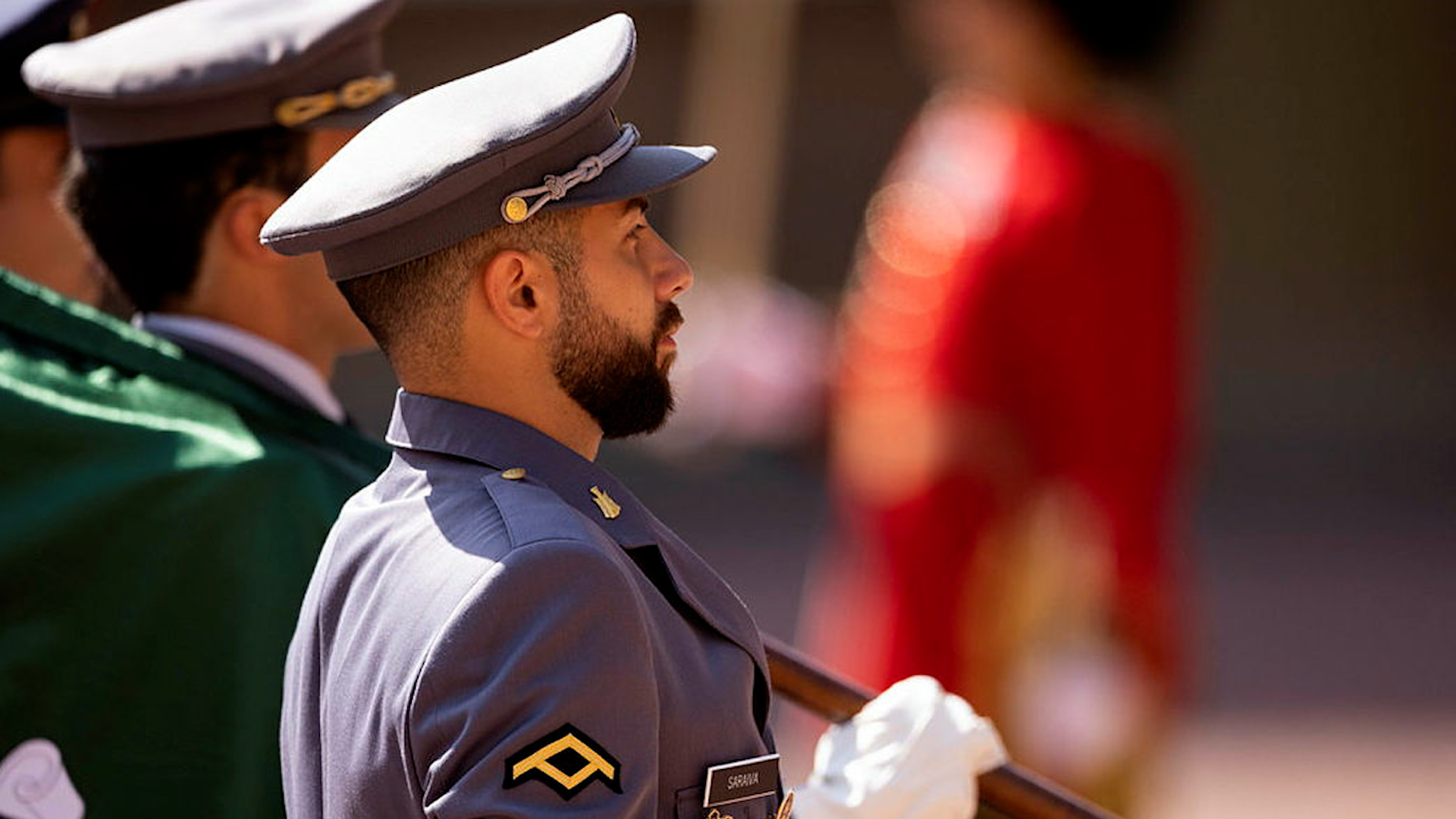
Russia: Traditionally, soldiers of the Russian Tsardom wore beards, this changed however during the reign of Peter the Great when they were completely banned in the army - and even for civilians, except members of the clergy.
It was not until 1895 that beards were universally recognised.
Spain: Spanish troops are held to a relaxed facial hair standard. Dress and grooming standards for Spanish ISAF forces have been relaxed to help the troops blend in better.
Serbia: In the Serbian military, the only facial hair allowed is a neatly trimmed moustache. The rest of the face must be clean-shaven on all occasions unless legitimate reasons prevent it, such as winter field operations or war operations.
Sweden: Regulations require Swedish personnel to be closely shaved. Within the Royal Guard (Högvakten), the Royal Company (Livkomp) and other personnel performing temporary or regular ceremonial duties, this rule is strictly enforced.
In other units, beards tend to be allowed under the discretion of the company commander or other higher-ranking commanders. The general provisions of well-managed appearance are enforced when it comes to beards.
Similarly to other nations, soldiers are allowed to grow beards during service abroad, for example in Afghanistan.

Switzerland: The Swiss armed forces allow moustaches, beards and sideburns, as long as they are neatly trimmed.
Ukraine: Ukrainian Cossacks have traditionally had a unique beard style. Their long Cossack moustache was famous throughout Ukraine from the Middle Ages to modern times. The length of the Cossack moustache is important, the longer the better.
During the Russian Invasion of Ukraine, many soldiers and volunteers were spotted with beards and various types of facial hair.
UK: The British Army's policy on facial hair has also been under the public spotlight, especially following suggestions last year that potential recruits could be put off joining because they cannot sport a beard under existing policies.
The UK's policy on dress regulations is routinely reviewed, as shown here.
The Americas
United States
The US Army, Air Force and Marine Corps, excluding limited exemptions for religious accommodation, have policies that prohibit beards on the basis of hygiene and the necessity of a good seal for CBRN protective masks.
The official position is that uniform personal appearance and grooming contribute to discipline and camaraderie.
Serving in the US Army requires a well-groomed and professional appearance. It says it strives to be as inclusive as possible while making sure every soldier can perform their duties as safely as possible.
Appearance regulations are considerate of religious beliefs and many forms of cultural expression.
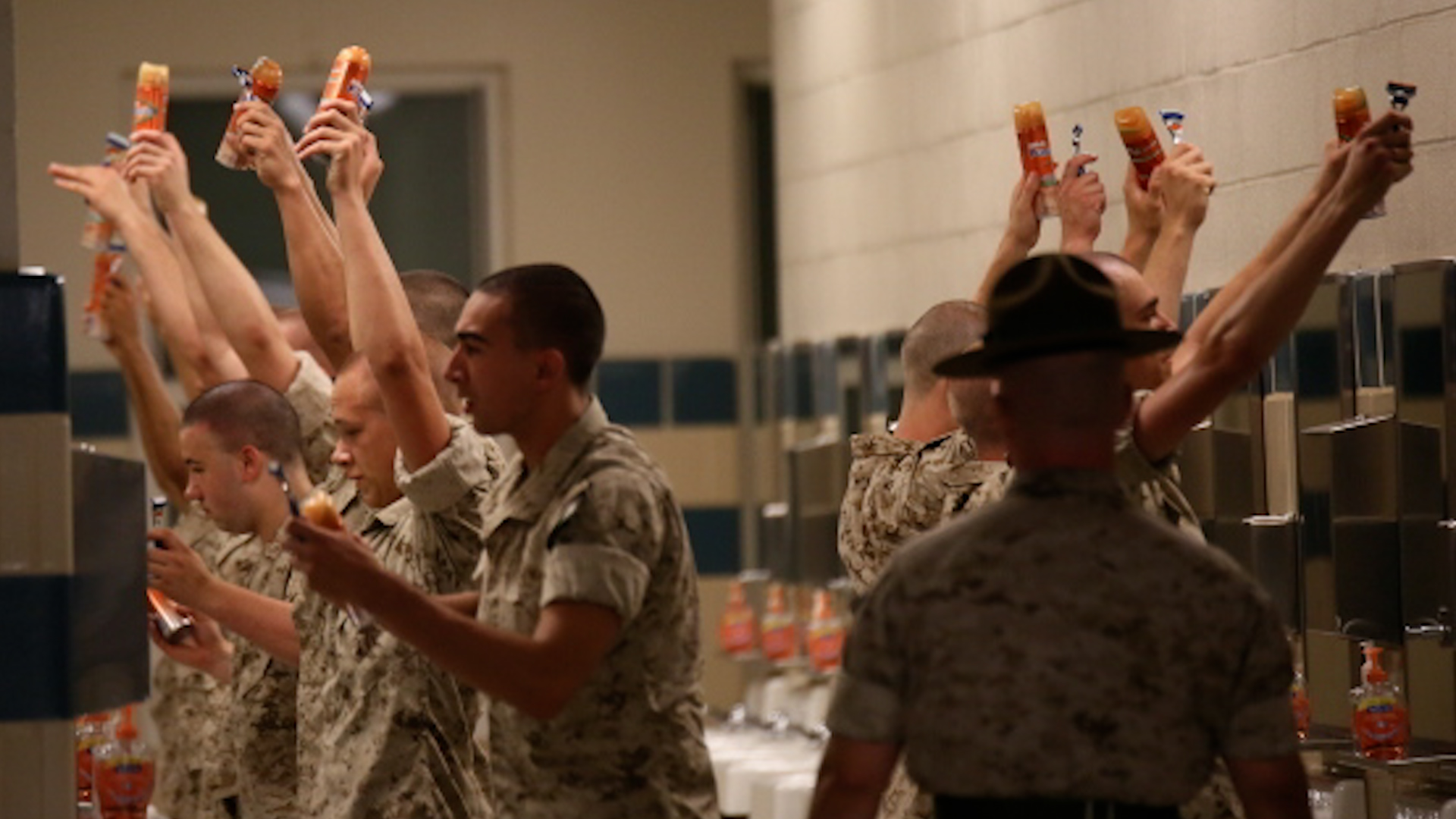
Chile: Beards and sideburns have been banned since the start of the 20th century.
However, moustaches have been allowed to all permanent personnel of all three branches of the Chilean armed forces of all ranks since 2002, as long as they are trimmed just above the lip.
Argentina: A clean-shaven face is considered part of a spirit of order, hygiene and discipline within the Argentinian armed forces. Beards and sideburns have been banned since the early 20th century.
Well-trimmed moustaches are allowed in most of these branches, although in some cases this is a privilege of officers and sub-officers, and moustaches are not allowed to be grown while on duty.
The navy allows officers and NCOs to have beards, but they must be grown while the person is on leave. Bearded Argentine naval and marine officers and senior NCOs are now a relatively common sight.
Brazil: The Brazilian army, navy and air force allow moustaches, as long as they are trimmed to just above the upper lip.
Recruits are not permitted to wear a moustache. Beards are generally not allowed except under special circumstances, such as covering a deformity. In such cases, a beard is permitted with authorisation.
Canada: Since September 2018 Canada has allowed the wearing of a beard by junior members. A beard is not allowed without a moustache, and only full beards may be worn, not styled ones.
According to Canadian military dress instructions: "Hair shall not prevent the proper wear of a military headdress or protective equipment. Hair must be worn so that without headdress the member’s face is visible. Full or partial shaving of hair on the head is permitted. Colouring of hair is permitted.
"All styles of facial hair and sideburns are authorised. Facial hair may be braided/ponytail style and coloured. Commanders of commands, task force commanders and commanding officers retain the right to order restrictions on the wearing of facial hair and sideburns to meet national regulations."

Colombia: Only after the rank of captain are officers in the army or air force allowed to wear a well-trimmed moustache that does not grow over the upper lip.
Mexico: Beards and sideburns are not allowed in the Mexican military without exception, including the navy. Personnel of all ranks must be clean-shaven and keep their hair short.
Asia
India: In the Indian armed forces, male Sikh servicemen are allowed to wear full beards as their religion expressly requires followers to do so. However, they are specifically required to "dress up their hair and beard properly".
Non-Sikh personnel are allowed to grow moustaches, with the only regulation being that they will be of moderate length.
Non-Sikhs serving in the Indian army or Indian air force are not permitted to wear beards. However, army personnel on active duty are sometimes exempt from facial hair regulations for the duration of their tour if their deployment makes access to grooming facilities difficult.
Indian navy personnel are allowed to grow beards subject to the permission of their commanding officer.
Exceptions for other religions are made in the case of special forces operatives such as the Indian army's para (special forces), who are allowed to grow beards.
Iran: Beards are permitted in the armed forces of the Islamic Republic of Iran.
As a sign of their ideological motivation, Islamic Revolutionary Guard Corps personnel used to tend to wear full beards, while Islamic Republic of Iran Army personnel usually have trimmed beards or wear moustaches.
Iraq: In the Iraqi armed forces, beards to a certain length were traditionally permitted, however, a ban was brought into effect in April 2012 due to public associations between beards and certain sectarian militias in Iraq.
As a result of the change, Iraqi soldiers must now be clean-shaven.
Israel: The Israel Defence Forces prohibit the growing of facial hair unless a special request form has been filed and approved.
The requests can be for religious reasons (full beard only), health reasons such as acne (no restrictions on facial hair styles) and on the grounds of "free will", which means the facial hair (a moustache, goatee or full beard - all of which must be well groomed) has to be part of the soldier's identity and part of his self-esteem.
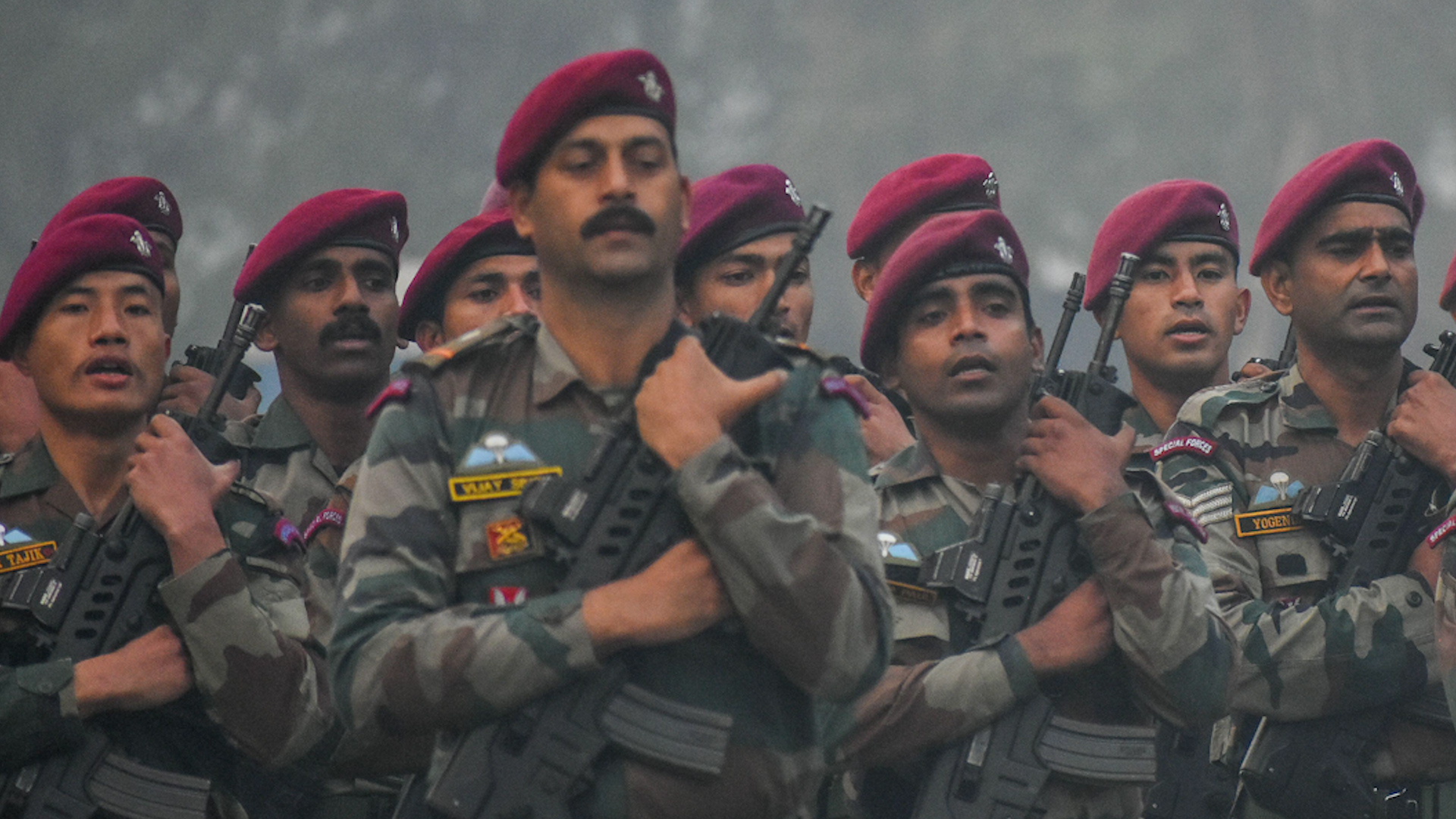
Lebanon: Beards are not allowed in the Lebanese armed forces. Only trimmed moustaches that do not pass the upper lip are permitted, and a special allowance is paid as a result.
Pakistan: Beards are permitted in the Pakistani army, but they are allowed only if a special request is approved. The requests are generally for religious or health reasons, such as acne or a skin allergy.
There is a special allowance for bigger moustaches, but they must still be neat and trimmed.
Philippines: Facial hair is prohibited in the armed forces of the Philippines. The regulation applies to all personnel regardless of rank, and a violation can be grounds for disciplinary action.
Nepal: Currently, moustaches and beards are not within the regulations of the Nepalese army..
Singapore: Moustaches, but not beards, are permitted in the Singaporean army. If a moustache is worn, it has to be kept neatly trimmed and of moderate length. There is an exception for beards that are allowed for those of the Sikh faith.
South Korea: Beards are not allowed in the South Korean Armed Forces.
Sri Lanka: The navy does not allow moustaches alone, but does allow full-set beards. Moustaches, but not beards, are permitted in the army and air force.
However, members of the commando and special forces units are allowed to wear beards if based outside their home camps.
Syria: Beards are not allowed in the Syrian army, but trimmed moustaches are permitted.
Turkey: Turkish personnel are allowed to keep beards under a ruling issued in 2016 under the governance of the AK Party. Previously they were required to be clean-shaven at all times.
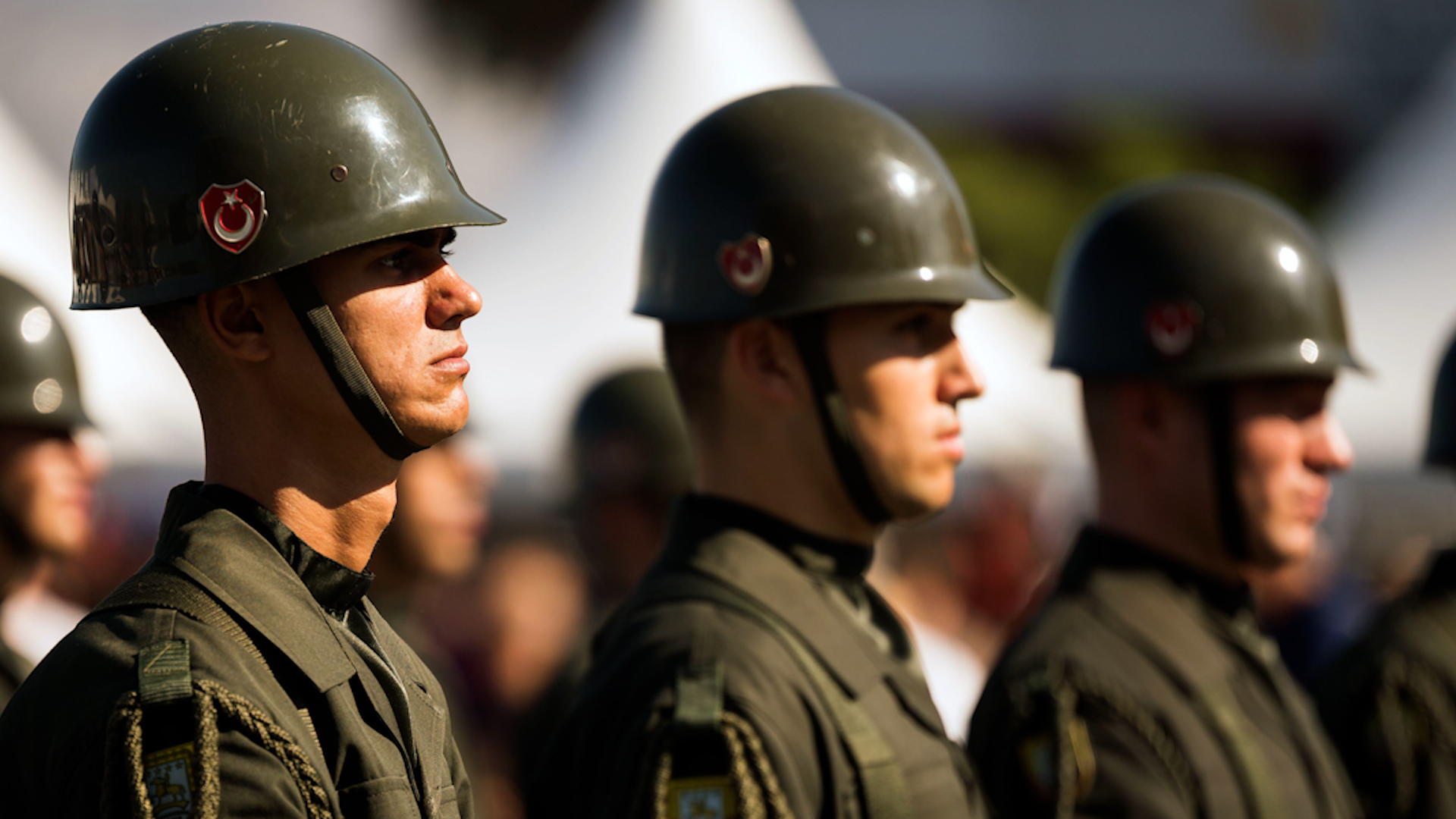
Oceania
Australia: Beards are normally not allowed in the Australian army. Moustaches may be worn, however they cannot be grown past the ends of the top lip.
Sideburns are not to be grown past the point where the bottom of the ear connects to the facial skin. In some circumstances, such as medical or religious reasons, beards may be permitted. Exceptions to the rule are assault pioneers and special forces that are deployed.
In the Royal Australian Navy, serving members may grow a beard, but only with approval from their commanding officer. The beard must be complete, joined from sideburns, covering the chin and joining the moustache.
A moustache on its own is not permitted. As of 1 November 2022, serving Royal Australian Air Force members may seek approval to grow a beard from their commanding officer, following the same standards as the navy. Previously, only moustaches were permitted.









